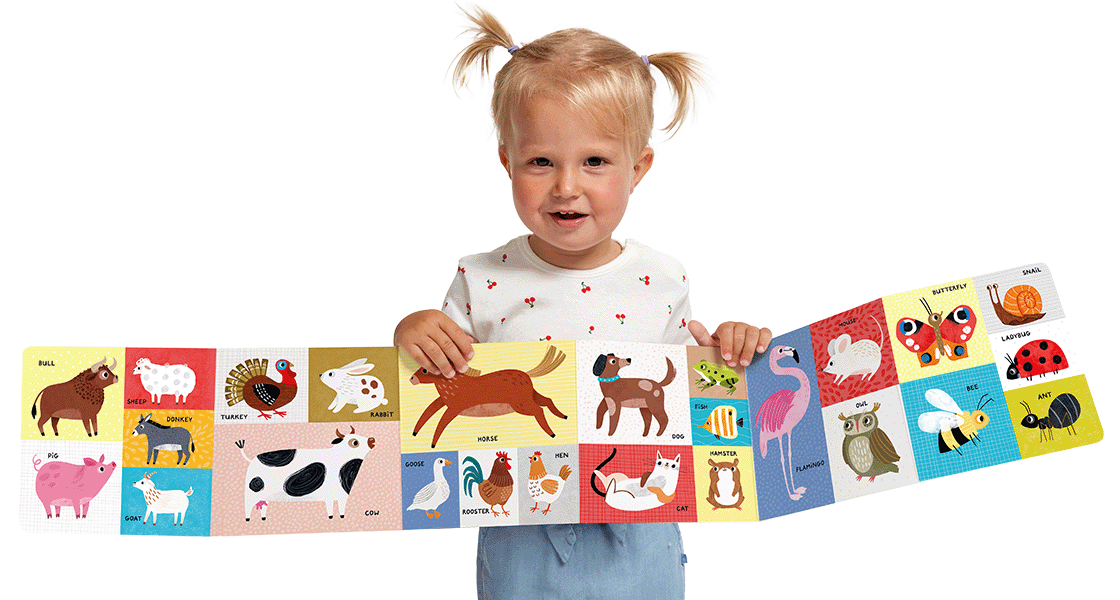Six to twelve months
Immediately after birth, a newborn can’t even hold up its own head, but at around one year of age will likely be walking independently. That’s impressive, right? The biggest leap in human motor development takes place between six and twelve months. Let’s take a closer look at what is happening during the second six months of an infant’s life.
Child development from 6-12 months
It’s a good idea to keep track of all your child’s milestones because this is a period of intensive change. From six to twelve months, babies develop dynamically in every way. A greater capacity for independent movement as well as the ability to manipulate objects while sitting up changes how and to what extent your baby can explore the world.
- Always make sure baby is in a safe environment.
- Babies are capable of rolling over even before six months, first from back to stomach and then, around five to six months, from stomach to back. If held by the hands, baby is even capable of pulling themselves upright to a sitting position.
- Babies learn to transfer objects from one hand to another and deliberately shake a bell or rattle.
- Usually, at around nine months, babies are able to sit up on their own, start to crawl and can stand up while holding onto furniture.
- This is also when baby begins to point, an important skill for development. It is a key element in communication, which allows a child that cannot speak to express their needs and build a shared field of attention with caregivers. This is a great time to show your child book illustrations and point out objects around you!
- At this age, babies discover the entertainment (be patient!) that comes from deliberately dropping objects and watching what happens to them. These are baby’s first experiments with gravity!
- Around one year, your child can walk while holding onto furniture or an adult’s hand.
- Babies begin to deliberately give and take toys, and roll a ball during play.
- From six to twelve months, babies gradually begin to eat a range of solid foods, and learn to grasp, bite and chew foods. They also display higher independence and may try to grab the feeding spoon.
- After cooing, the next phrase of speech development is babbling. These are deliberate noises consisting of vowels and consonants, inspired by the sounds babies hear around them and repeated as syllables. This is great training for the speech organs.
- Babies begin to recognize familiar faces and may be afraid of strangers.
- They slowly begin to react to “no” and to display anger and protest.
- At this age, babies can imitate simple gestures such as waving bye-bye or clapping.
- Baby starts to react to their own name, looks for hidden objects and shows an interest in shape sorters.
- Your baby is able to demonstrate what certain objects are used for (e.g. a spoon or hairbrush).
- Around one year, your child is interested in pictures, points to objects and asks, for example, “where is bear?” They are able to pass an object when asked and scream to get attention.
- This is also the moment when children say their first words and take their first steps – great things to look forward to!
Ideas for playing with an older infant
How can you play with an older infant? Here are some suggestions for playing with your baby from six to twelve months:
- Let your child conquer their environment safely, touch various surfaces and explore the world sensorially.
- Give your child a sense of agency – this will help maintain their attention. Playing with a toy should give your child rapid reinforcement that they want to repeat. Let them make noise, fall down and roll over!
- Your child enjoys playing with sorting toys, and putting things in and taking things out of boxes. Check out our Discovering Circles shape sorter. Let your child sort the puzzle circles under your supervision!
- Children love human interaction and adult reactions are just as if not more important than successful play with a toy.
- Continue to vocalize with your child and take advantage of their interest in creating and repeating sounds. Baby Cards for 6-9 months contain a wealth of ideas concerning which sounds to mimic.
- Point to and name a variety of objects around you or in books. This is a great time to look at picture books from our Little Explorer’s Library together!
- When your child points to something, comment on what the child is pointing at.

Is your child over one year old? Check out our article on Child development from 12 to 18 months.











